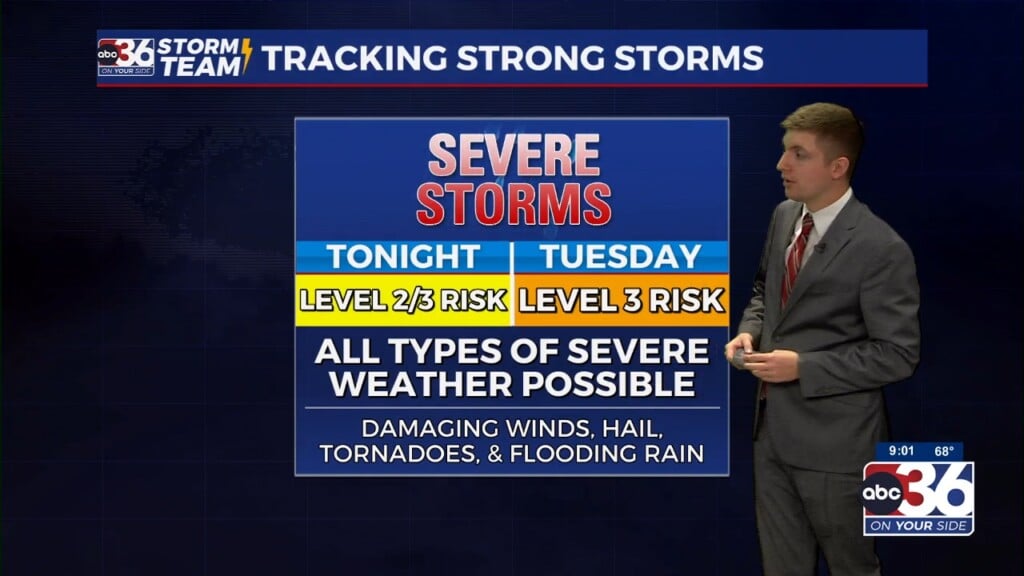A New Era in the Fight Against Breast Cancer
Speaker 1: Welcome back to Good Day Kentucky.
Early detection and treatment have yielded high survival rates for women diagnosed with early stage breast cancer. However, standard radiation techniques can present significant challenges for patients, especially those who must undergo weeks of daily treatments. Dr. Elizabeth Nichols, assistant professor and clinical director of the University of Maryland Medical Center, Department of Radiation Oncology, is here to tell us about a new FDA cleared treatment method developed by doctors and scientists at the university’s school of medicine.
Welcome to the show Dr. Nichols.
Speaker 1: All right, well Dr Nichols, let’s go right to it. How have the treatment options changed for women with early detected breast cancer?
Dr. Nichols: So the care rates for early stage breast cancer in our country are extremely high, over 90% for the majority of women and as a result of that, a lot of research both here at the University of Maryland School of Medicine as well as elsewhere, has really focused on how can we make treatments more convenient for women by shortening treatment time? How can we make side effects more acceptable and decrease them overall? And how can we maintain good outcomes in terms of how the breast looks after therapy? And so the development of the gamma pod was really in line with all of these ideas.
Speaker 1: Gotcha. Now what are the benefits of receiving a shorter course of radiation and treating only part of the breast versus treating the entire breast area?
Dr. Nichols: So there’s a lot of benefits for women in terms of shortening the overall treatment time. For a lot of women having to come in for a daily treatment Monday through Friday for weeks on end, it’s very difficult for women.
Now women, we’re often juggling a lot of other responsibilities, home kids, school, work, and that makes getting treatment very tough for patients. So one of the things the gamma pod allows us to do is really shorten treatment time into one to five treatments.
In addition to this. Part of the reason we’re able to do that is because we’re really focusing the radiation dose on the highest risk area, which is where the tumor used to be within the breast. Gamma pod delivers precision radiation therapy, which really helps minimize radiation dose to the normal breast tissue as well as our vital organs like the heart and the lung. This all helps improve women’s quality of life because we’re making the treatment more convenient.
Speaker 1: Oh, that’s awesome. And how does the gamma pod work? How does it actually work?
Dr. Nichols: The process starts off by actually developing a custom fitted mold immobilization device for the breast. And we take advantage of the fact that we lay women in the, on their bellies are in the prone position and when we do that, that helps pull the breast tissue away from the ribs, the heart and the lung.
We then use a slight vacuum seal to help keep this in place. And that’s what allows us to make the radiation so precise because we know that the breast isn’t moving at all. Patients then undergo the treatment planning where we create the plan that’s all customized for them and their body, and then the treatment delivery.
From start to finish, the whole process takes about an hour and a half as opposed to coming in daily for 30 to 45 minutes each day.
Speaker 1: Wow. And why did the research team develop the gamma pod?
Dr. Nichols: So part of the reason the research team developed the gamma pod is the fact that in general for early stage breast cancer patients, whether their breast cancer is a less aggressive form, or a more aggressive one, women historically have always been treated the same. What we know now from some additional research is that women with less aggressive breast cancers don’t need as much treatment and so the gamma pod helps prevent over treatment for some of these women.
In addition to that, women are often faced with side effects from treatment. And so what we are seeing with the gamma pod is that some of the short-term side effects are significantly reduced, specifically fatigue and the skin reaction.
And again, these are the two main side effects that really affect women’s quality of life . With the skin reaction with the gamma pod, we’re actually seeing essentially no skin reaction for the patients that we’ve treated. Whereas most women actually have to do a skincare regimen for several weeks to help with the radiation side effects.
Speaker 1: Awesome. And what else do we need to know about the gamma pod, and where do we go for more information?
Dr. Nichols: Currently the [inaudible 00:03:40] St Maryland School of Medicine is the only location in our country that’s offering this therapy. And so if you are a patient or a family member, you have a loved one who would like more information, they can visit our website at umgccc.org/gammapod.
Speaker 1: Awesome. Dr Nichols. Thank you for all of your hard work that you’re doing with the research with this. We really appreciate you being here today and we have more Good Day Kentucky coming up right after this. Keep it right here.




Leave a Reply